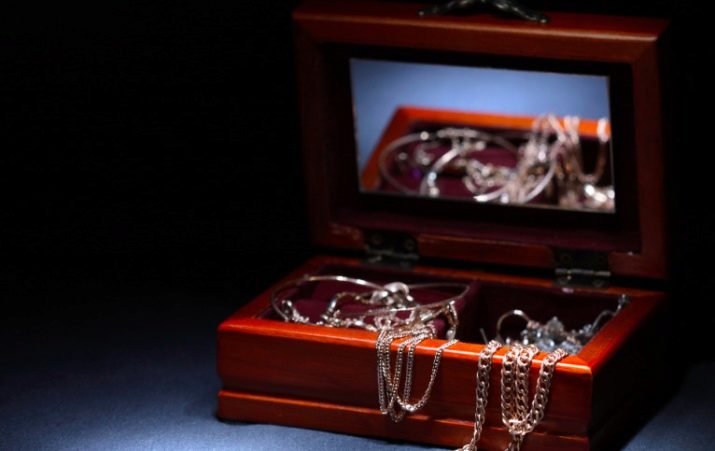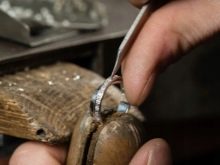All about silver alloys

Silver is one of the most beloved metals around the globe, in some countries it is revered even more than gold. Skillful craftsmen make not only all kinds of jewelry out of silver, but also cutlery, dishes, and other useful things. Caskets made of this metal are equally popular.
The most widespread demand for silver is among the creators of jewelry, they create earrings, rings and bracelets from it, complementing them with precious stones. Despite the fact that this metal is quite affordable, it was and is chosen by many royals.
Peculiarities
Silver is a rather ductile, heavy, but very soft metal. It has good electrical and thermal conductivity, which makes it very often used for industrial purposes.

An interesting fact: this metal does not dissolve from exposure to hydrochloric acid, but it can be liquefied in ferric chloride.


Silver is not a bioelement, but scientists have proven that the metal has antibacterial properties. Some believe that if you throw a clean silver coin into water, the latter will be cleansed of germs. But this does not mean at all that you should constantly use water and products "purified" in this way. The accumulation of metal in the body is fraught with negative consequences and serious diseases. The metal content in drinking water can be very dangerous.
It is advisable to keep silver objects and jewelry away from iodine, because if they react with it, they will darken. Such "contamination" will not be easy to clean up.

It is believed that silver jewelry is expensive, and therefore buyers often prefer options from silver alloys with other metals. But it is not so. Pure metal will not please with its practical properties and softness, which is why experts often mix copper, titanium or platinum with it.
Professionals have noticed that in the world only 20% of silver is spent on the creation of jewelry. Products made of pure metal not only darken quickly, but are also easily scratched, while various alloys are harder and less susceptible to mechanical damage. Master alloys are also called ligatures.
Due to the existence of various ligatures, professional jewelers can create the most sophisticated pieces using sophisticated techniques.



You should not assume that alloys make the metal cheaper, on the contrary, they make it more wear-resistant and attractive. But, of course, do not forget about proper care, since even ligatures with silver tend to darken and get dirty over time.

Types and their properties
Copper is most commonly added to liquid silver today. Experts have noticed that both metals interact perfectly with each other. But this does not end there - most often nickel, zinc, cadmium, as well as other elements that can be easily found in the periodic system (table) of Mendeleev, are also added to such a ligature with copper. Nickel is most commonly used to add extra shine.



The most expensive and prestigious is sterling silver, which contains an admixture of copper. This alloy contains more than 92% pure silver.


Rhodium plated silver, like sterling silver, is one of the most expensive and demanded materials. Experts attribute it to the platinum group due to its high wear resistance and improved external data.


One of the popular varieties is filigree silver, which is a pure metal. It is often used for steel notching.


Blackened silver obtained by adding copper and lead. A variety of blackened is oxidized silver.


Gilded silver is created by using gold, copper or brass in a ligature. Such jewelry can darken over time and look more like bronze.


If the alloy contains 1% nickel, this means that the strength of the future product, as well as its wear resistance, will be increased, but with a higher nickel content, the resulting alloy will become brittle. There must be a middle ground.
The content of aluminum in an alloy with silver more than 6% will also not lead to a high-quality mixture. The same applies to the high content of zinc, which can reduce to a minimum all the beneficial properties of metals.
Alloys of silver with iron are not the most stable, and therefore are extremely rarely created. The same goes for tin, which makes the alloy dull.
Silver-palladium alloys are actively used in dentistry for dental prosthetics.



Application
The scope of application of silver depends on its sample. Today in our country 8 samples of this metal are used. Let's consider them in more detail.
- 720. The lowest-grade metal, the ligature of which is dominated by copper, which gives the metal a yellow tint. Due to its not the most aesthetically pleasing properties, the metal of this sample is not used in jewelry.
- 800 and 830. These alloys are also not relevant for jewelry because of their high copper content, but they make excellent knife handles and other items for everyday use.
- 875. Such an alloy is used in jewelry, since there is more than 87% pure silver in it, it has a similar appearance to white gold, which is often used by fraudsters, passing off some products for others.
- 916. Today this material is practically not used in the production of jewelry. During the times of the Soviet Union, household items were actively made from the metal of this sample: teapots, silver dinner sets, sugar bowls, etc.
- 925. This test is one of the most demanded, it meets all quality metal standards. Metal reveals all the beauty of silver jewelry. It is known that English coins were minted from the 925-proof metal, as a result of which it was named “sterling silver”.
- 960. This alloy contains 96% pure silver, it is important to use it to create products that will then be covered with enamel. Items made of almost pure silver are very delicate, they must be taken care of, otherwise they can be easily damaged.
- 999. Sterling silver used to make collectible coins and to cast silver bars.


Other alloys are also known that do not have samples, since they contain a small amount of silver. These alloys are used to make inexpensive jewelry like brooches and simple rings.
There are also alloys that mimic silver., and are not made on its basis, in their composition there is no silver at all. As a rule, they contain nickel, iron and manganese. Imitation alloys are almost impossible to distinguish from real ones with the naked eye. This kind of alloy is called cupronickel, it is widely used in making inexpensive jewelry and cutlery.
See the video below for tips on caring for silver jewelry.








